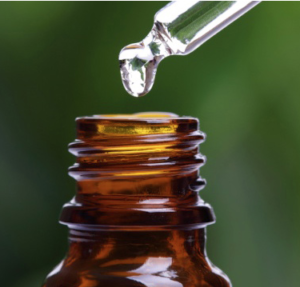Inexpensive, nontoxic, versatile and potent: Hydrogen peroxide is a wonder product that belongs in every home.
 Hydrogen peroxide is widely known as a disinfectant for minor cuts and scrapes, but many people don’t understand that it works simply by oxidizing microbes to death. Hydrogen peroxide is simply water with an extra oxygen atom attached; in this unstable form, the oxygen breaks off from the water and forms a free radical solution that is highly reactive. But once it has reacted, the only byproducts are non-reactive oxygen and water. This is why, when used properly, hydrogen peroxide is so safe.
Hydrogen peroxide is widely known as a disinfectant for minor cuts and scrapes, but many people don’t understand that it works simply by oxidizing microbes to death. Hydrogen peroxide is simply water with an extra oxygen atom attached; in this unstable form, the oxygen breaks off from the water and forms a free radical solution that is highly reactive. But once it has reacted, the only byproducts are non-reactive oxygen and water. This is why, when used properly, hydrogen peroxide is so safe.
Hydrogen peroxide is so safe and effective that our own immune systems actually generate it as the first line of defense against microbes as diverse as bacteria, viruses, yeast and parasites. In this context, it also appears to act as an anti-inflammatory.
Natural remedies
So how can you make hydrogen peroxide work for you? Unsurprisingly, many of this product’s greatest uses are as natural cures or for some other health-promoting function. For example, a nasal spray made from one tablespoon of 3 percent hydrogen peroxide in a cup of non-chlorinated water can be an effective treatment for sinus infections. Toothaches caused by minor infection can be treated with a hydrogen peroxide mouthwash; the same mouthwash can also remove bad breath.
If you think you’re coming down with a cold, stave it off by placing a few drops of hydrogen peroxide in your ears each morning.
Hydrogen peroxide is also a potent anti-fungal. A 50–50 mix of hydrogen peroxide and water, sprayed on the feet every night and allowed to dry, is a good way to get rid of athlete’s foot and other fungal infections. A similar (but much more diluted) cure can be used on plants suffering from fungus; in this case, dissolve half a cup of hydrogen peroxide in a gallon of water and spray on the affected plant.
Replace your cosmetics!
You can also get lots of use from hydrogen peroxide around the home. Mixed with baking soda, it makes a great toothpaste. It can also be used to protect water that you expect to be standing for a while, such as that in a humidifier or steamer – a pint of hydrogen peroxide mixed in will prevent microbial growth. Similarly, you can use hydrogen peroxide as a toilet bowl cleaner; let it sit for 20 minutes and then scrub.
When properly diluted, hydrogen peroxide can detox your skin by stripping away harmful environmental toxins. Just mix 2 quarts of hydrogen peroxide into a full bathtub and soak for half an hour or more.
Other cosmetic uses of hydrogen peroxide include cleaning your contact lenses – it denatures proteins that build up on the lenses – or helping to remove ear wax buildup. A few drops in the ears, followed by a few drops of olive oil, will cause earwax to break up and drain out.
Hydrogen peroxide can also be used as a safer, gentler alternative to bleach for lightening your hair.
Household uses
Hydrogen peroxide isn’t just for your body; it can also be for your dog’s! Hydrogen peroxide can induce rapid vomiting in dogs that have swallowed dangerous objects. Vomiting should only be induced upon a vet’s recommendation, however.
Finally, hydrogen peroxide can be great for your clothing. Use it instead of bleach to whiten your laundry. More carefully applied, it can take out organic stains by breaking apart the proteins causing the discoloration. This is particularly effective with blood.
Use caution when applying hydrogen peroxide directly to clothing, as it may bleach or discolor some fabrics. But if you have a fresh, organic stain, you should be fine if you pour on just a small amount of hydrogen peroxide, wait a few minutes (it should foam), and then rinse it off with cold water and soap.
Written by David Gutierrez, staff writer for Natural News ~ October 30, 2016.
FAIR USE NOTICE: This site contains copyrighted material the use of which has not always been specifically authorized by the copyright owner. We are making such material available in our efforts to advance understanding of environmental, political, human rights, economic, democracy, scientific, and social justice issues, etc. We believe this constitutes a ‘fair use’ of any such copyrighted material as provided for in section 107 of the US Copyright Law. In accordance with Title 17 U. S. C. Section 107, the material on this site is distributed without profit to those who have expressed a prior interest in receiving the included information for research and educational purposes. For more information go to: http://www.law.cornell.edu/uscode/17/107.shtml“
